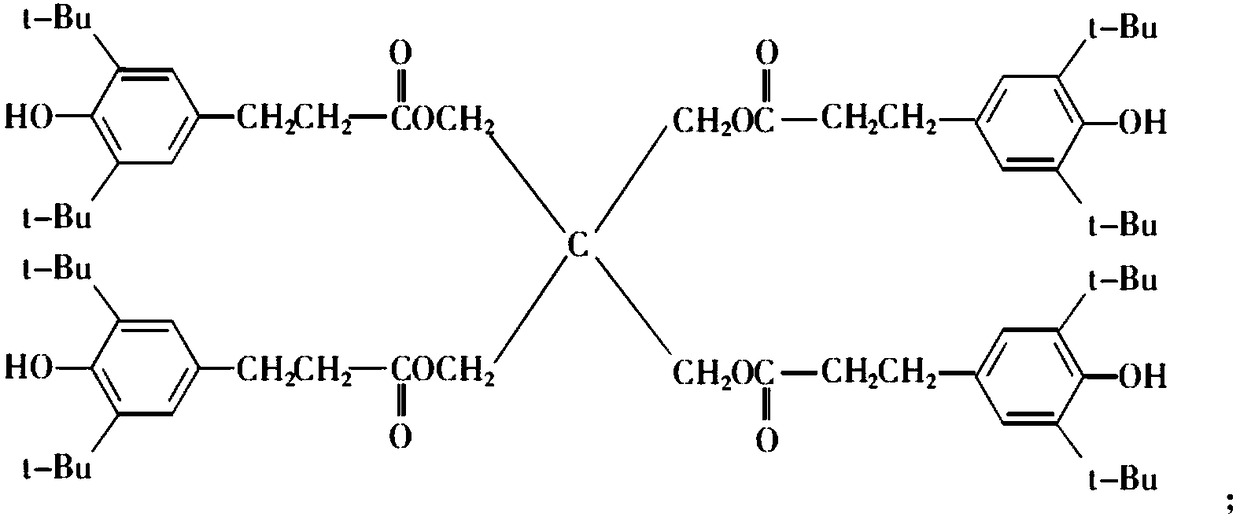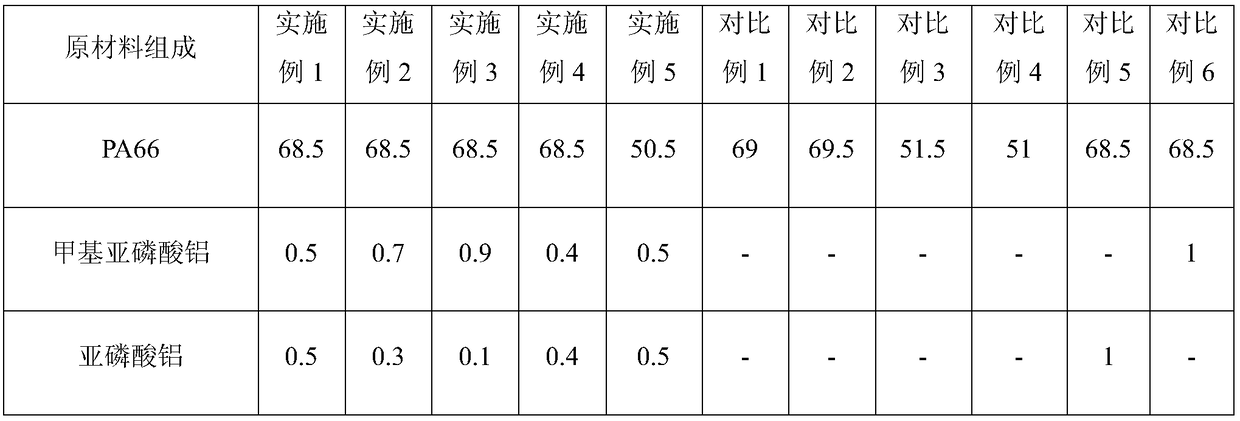Method for promoting high temperature heat stability of thermoplastic polymer or compound thereof by utilizing inorganic and alkyl metallic phosphites
A thermoplastic polymer, alkyl phosphorous acid technology, applied in the field of polymer materials, can solve problems such as easy discoloration
- Summary
- Abstract
- Description
- Claims
- Application Information
AI Technical Summary
Problems solved by technology
Method used
Image
Examples
Embodiment 1
[0058] The compound of inorganic phosphorous acid metal salt and alkyl phosphorous acid metal salt is applied to thermoplastic polymer or its composite, and the thermal stability effect is investigated according to the following steps and test methods.
[0059] 1. Mixing of compounds and thermoplastic polymers or their compounds
[0060] Add the pre-weighed compound, thermoplastic polymer, and other components according to the ratio into the high-speed mixer, start high-speed stirring, and stir for 10 minutes to complete the mixing of each component and discharge.
[0061] 2. Extrusion and granulation of materials
[0062] Set the temperature of each zone of the twin-screw extruder at the predetermined temperature, and after the temperature stabilizes for 20 minutes, start the main engine and feeder to complete the extrusion and granulation of the material. The granulated material is sent into the silo through the air conveying system and dried.
[0063] 3. Application and t...
Embodiment 2
[0075] The implementation process is the same as in Example 1, except for adjusting the ratio of aluminum methyl phosphite and aluminum phosphite, see Table 1 for other materials and their proportioning, and see Table 1 for the obtained material results.
Embodiment 3
[0077] The implementation process is the same as in Example 1, except for adjusting the ratio of aluminum methyl phosphite and aluminum phosphite, see Table 1 for other materials and their proportioning, and see Table 1 for the obtained material results.
PUM
 Login to View More
Login to View More Abstract
Description
Claims
Application Information
 Login to View More
Login to View More - R&D
- Intellectual Property
- Life Sciences
- Materials
- Tech Scout
- Unparalleled Data Quality
- Higher Quality Content
- 60% Fewer Hallucinations
Browse by: Latest US Patents, China's latest patents, Technical Efficacy Thesaurus, Application Domain, Technology Topic, Popular Technical Reports.
© 2025 PatSnap. All rights reserved.Legal|Privacy policy|Modern Slavery Act Transparency Statement|Sitemap|About US| Contact US: help@patsnap.com



